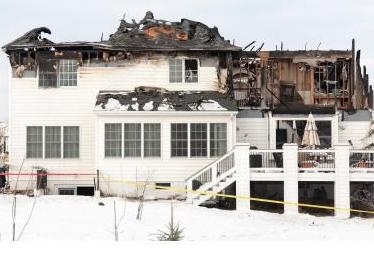 Many people spend their winters inside and turn to alternative heating sources to keep warm, but along with it comes an increased risk of fire.
Many people spend their winters inside and turn to alternative heating sources to keep warm, but along with it comes an increased risk of fire.
This year is no different. The U.S. Fire Administration warns that home fires have claimed 148 lives in the first three weeks of January alone.
Home fire incidents are collectively highest in the three winter months of January, February and March.
Cooking and heating are the leading causes of these fires. The risk of fire also increases with the use of electric space heaters, fireplaces and wood stoves.
Older adults (50 deaths) and children (28 deaths) have accounted for more than half of home fire deaths reported by the news media in January.
The toll on people and places in recent days includes:
• Jan. 16: A grandmother and three young children died in a house fire in Gloucester County, Va.
• Jan. 13: Two women died in a house fire in Scuddy, Ky. The cause of the fire is believed to be a skillet left on the stove.
• Jan. 11: A father, mother and their two daughters, ages 13 and 9, were killed in a house fire in Mountain View, Ark.
• Jan. 10: A grandmother and three young children died in a house fire in Haltom City, Texas. The fire started near a Christmas tree.
• Jan. 10: A 52-year-old-woman and her 28-year-old daughter died in a house fire in Akron, Ohio. Firefighters report not finding any smoke alarms in the home.
• Jan. 9: A father and his four young children died in a Pike County, Ky. home fire. Investigators report that an electric heater likely caused the fire.
• Jan. 8: Four young children, all under the age of 7, died in a Conyers, Ga. house fire. There were no working smoke alarms in the house.
• Jan. 7: Four family members spanning three generations died in a fire involving a Christmas tree in Rockford, Il.
Most of these tragedies remain under investigation but space heaters, candles and cooking are among the causes suspected in a number of these incidents.
Whatever the cause of the fires, one thing is certain: all of these deaths were preventable. The USFA encourages everyone to take just 30 seconds to learn the essentials for staying fire-safe this winter by viewing its winter fire safety video.
It’s also important to keep in mind that smoke alarms are an essential line of defense in the home, giving families valuable time to escape. About two-thirds of fire deaths occur in homes with no smoke alarms, or in homes where residents removed the alarm’s batteries or where the batteries are dead.
A working smoke alarm can help a family escape a deadly home fire. It can also help save the lives of firefighters who would otherwise have to risk their lives by searching a burning home for residents. A working smoke alarm continuously scans the air for smoke, 24 hours a day, seven days a week.
The USFA’s Install. Inspect. Protect. public education campaign urges residents to install smoke alarms in their homes and inspect and maintain them on a regular basis.












